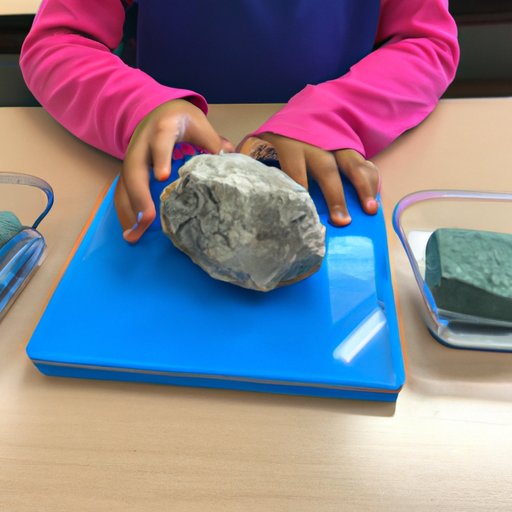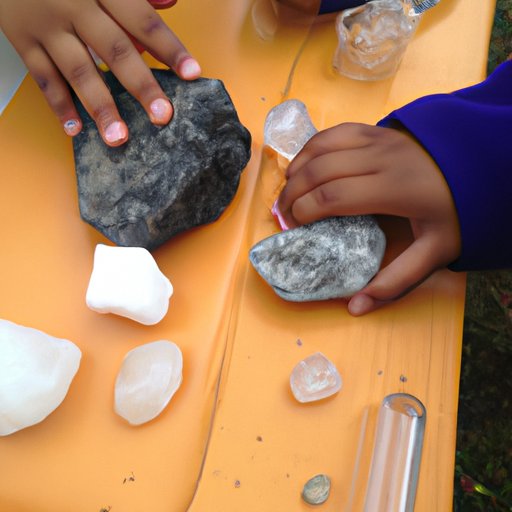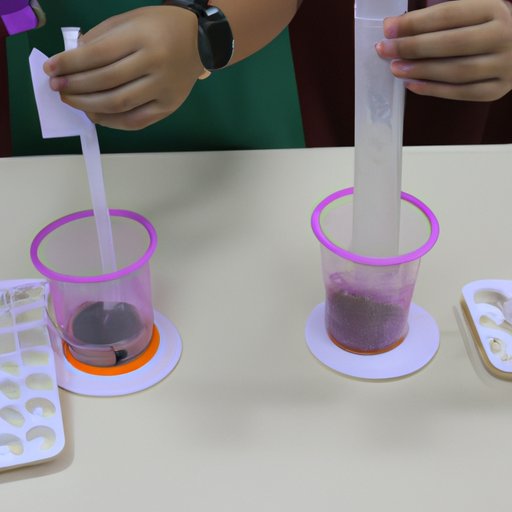Introduction
Solids are one of the three fundamental states of matter, along with liquids and gases. In science, solids refer to objects that have a definite shape and volume. They are characterized by their rigidity, which results from strong intermolecular bonds between atoms or molecules. In this article, we will explore what solids in science are, their physical properties, different types, characteristics in nature, impact on everyday life, use in scientific experiments, and how they behave under extreme conditions.

Exploring the Physical Properties of Solids in Science
The physical properties of a solid are those characteristics that can be observed or measured without changing its chemical composition. These properties include color, density, hardness, melting point, boiling point, electrical conductivity, and thermal conductivity.
Color is one of the most common physical properties of solids. Different substances may appear as white, black, gray, yellow, red, blue, or green depending on their molecular structure. Density is another important property of solids; it is the mass of a unit volume of material and is usually expressed in grams per cubic centimeter (g/cm3). Hardness is also an important physical property; it describes the ability of a material to resist being scratched or indented. Other important physical properties of solids include melting point, boiling point, electrical conductivity, and thermal conductivity.
An Introduction to the Different Types of Solids
Solids can be classified into two main categories: crystalline and amorphous. Crystalline solids are organized in a regular pattern of atoms or molecules, while amorphous solids lack any long-range order. Examples of common crystalline solids include metals, minerals, and gems. Amorphous solids include glass, plastics, and some polymers.

Examining the Characteristics of Solids in the Natural World
Solids can be found in many different forms in nature. Rocks, for example, are composed of various minerals that have been fused together over time. Sand, soil, and ice are other examples of naturally occurring solids. Each of these materials has unique properties, such as color, texture, and hardness, that make them useful in a variety of ways.
Solids also play an important role in the environment. For example, rocks provide habitats for plants and animals, while sand and soil allow plants to take root and grow. Ice helps to regulate global temperatures by reflecting sunlight back into space.
How Solids Impact Our Everyday Lives
Solids have become an integral part of our lives. They are used in a wide range of products, from furniture and appliances to electronics and vehicles. In addition, solids are also used in construction, manufacturing, and medical applications.
In our homes, solids can be found in the form of furniture, appliances, and building materials. In the workplace, solids are used to manufacture products, from computers to cars. In the medical field, solids are used to create prosthetics, implants, and surgical tools.
The use of solids in everyday life has many benefits. For example, they are durable and can withstand wear and tear. They are also relatively easy to work with, making them ideal for various applications. Finally, solids are often more cost-effective than other materials, making them a popular choice for many projects.

Investigating the Use of Solids in Scientific Experiments
Solids are also used extensively in scientific experiments. In physics, for example, solids are used to measure the properties of light and sound. In chemistry, solids are used to study the behavior of atoms and molecules. In geology, solids are used to study the composition and structure of rocks. In biology, solids are used to study the structure and function of cells and tissues.
In addition, solids are also used in a variety of other scientific fields, including astronomy, meteorology, and oceanography. For instance, solids are used to study the properties of stars, planets, and galaxies. They are also used to study the behavior of weather systems and the composition of the ocean.
Discovering How Solids Behave Under Extreme Conditions
The behavior of solids can change drastically when exposed to extreme conditions, such as high temperatures and pressures. At high temperatures, solids can melt and vaporize, while at high pressures, they can deform and fracture. Understanding how solids behave under extreme conditions is essential for a variety of applications, such as the design of aircraft and spacecraft, the development of new materials, and the exploration of extreme environments.
For example, scientists have used computer simulations to study the behavior of solids under extreme temperatures and pressures. According to a study published in the journal Science Advances, “Simulations of solids subjected to extreme conditions reveal unexpected behaviors, such as changes in crystal symmetry, melting, and even vaporization.”
Conclusion
In conclusion, solids are one of the three fundamental states of matter. They have a number of physical properties, including color, density, and hardness. Solids can be classified into two main categories: crystalline and amorphous. Solids can be found in many forms in nature and have numerous applications in everyday life. They are also used extensively in scientific experiments, particularly in physics, chemistry, and geology. Finally, the behavior of solids can change drastically when exposed to extreme conditions, such as high temperatures and pressures.
This article has provided a comprehensive overview of what solids in science are. We have explored their physical properties, different types, characteristics in nature, impact on everyday life, use in scientific experiments, and how they behave under extreme conditions. Hopefully, this article has helped to shed some light on this fascinating subject.
(Note: Is this article not meeting your expectations? Do you have knowledge or insights to share? Unlock new opportunities and expand your reach by joining our authors team. Click Registration to join us and share your expertise with our readers.)
